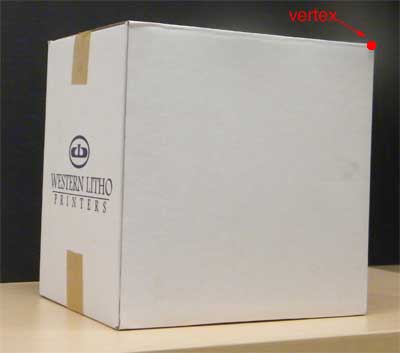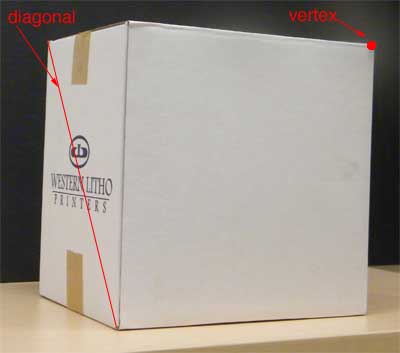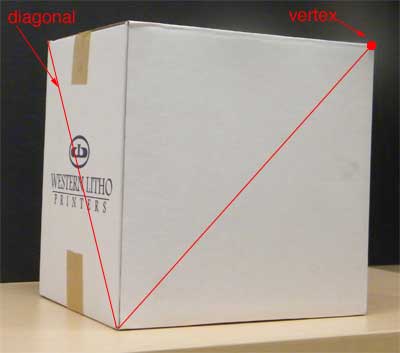| |||
| Math Central | Quandaries & Queries |
|
Question from tom, a student: a) Pass a plane containing a vertex of a rectangular parallelepiped and a b)Pass a plane through a cube of edge 8 in so that the section formed c)three of the edges of a rectangular parallelepiped that meet in a point you know the my only problem is how to illustrate this one...if only i |
Tom,
For problems involving a three dimensional object I find it helpful to have a physical model. A rectangular parallelepiped is a "box" and so I located a box in my office as a model for your first problem. The red dot identifies a vertex and the face with the printing does not contain the vertex.

This face has two diagonals so there are two ways to cut the box. Here is one diagonal.

Cutting the box by a plane containing this diagonal and the specified vertex cuts it along the red lines.

This cuts the box into two pieces. Is either of the pieces a pyramid? What is its volume?
What happens if you cut along the other diagonal?
Penny
 |
||
Math Central is supported by the University of Regina and The Pacific Institute for the Mathematical Sciences.